|
For information on well water testing read our information sheet and visit our website for resources.
|
For information on well water testing read our information sheet and visit our website for resources.
Check out our new infographic! Click the infographic to read our information sheet on Buying a Home with a Well.
Septic systems require regularly scheduled maintenance just like wells. See our tips below.
Proper maintenance of a septic system includes:
Protecting Your Septic Throughout the Year
Everyone in the household must consider what is flushed into the septic system. There are certain items that can reduce or damage the natural function of the septic system. Avoid flushing items that can clog the system or chemicals that can contaminate ground and surface water, and potentially damage the biological components of the system. DO NOT flush grease, fats, oils, bandages, feminine hygiene products, disposable diapers, wipes – even ones that say ‘flushable’, pharmaceuticals or medicines, paper towels, kitty litter, cigarette butts, coffee grounds, dental floss, hair, paint, pesticides, varnish, thinners, waste oil, or other chemicals. Ideally, ONLY water and household detergents are flushed into the system. The septic system’s drain field must also be protected. The following strategies are recommended to protect the field and prolong its functional life:
A properly maintained septic system poses no threat to the groundwater that supplies a household well. However, wastewater from a failing septic system can carry contaminants such as nitrates, harmful bacteria, and viruses into groundwater and potentially the well.
For more information download our free wellcare® information sheet on Your Septic System.
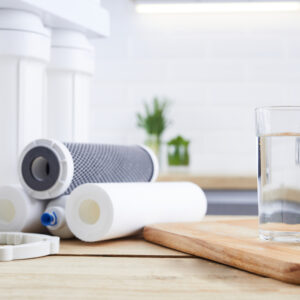 Don’t fret if you do not have water treatment! You should note that not all water needs to be treated. You should also know that not all water treatment works for all water quality. We like to say there is not a ‘one treatment fits all’ approach to water quality. It is more complex and can cause more harm than good if the wrong treatment system is installed or is not needed at all. It is imperative to test your water first before considering or installing water treatment.
Don’t fret if you do not have water treatment! You should note that not all water needs to be treated. You should also know that not all water treatment works for all water quality. We like to say there is not a ‘one treatment fits all’ approach to water quality. It is more complex and can cause more harm than good if the wrong treatment system is installed or is not needed at all. It is imperative to test your water first before considering or installing water treatment.
If you have water treatment, it is equally important to have these systems maintained per your water treatment professional or manufacturer’s recommendations. If you do not have a water treatment professional, visit Water Quality Association’s website to find a professional in your area.
For more information see our wellcare® information sheet on Water Treatment.
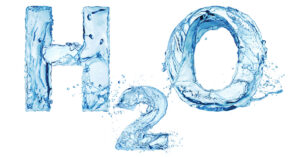 Testing your water is the only way to ensure your water quality is safe for you and your family. Remember that you are solely responsible for the quality of your drinking water. It is up to you to decide when and how to test your water. We have recommendations!
Testing your water is the only way to ensure your water quality is safe for you and your family. Remember that you are solely responsible for the quality of your drinking water. It is up to you to decide when and how to test your water. We have recommendations!
Recommended Testing
At a minimum, your water should be tested every year for bacteria, anything of local concern, or any contaminants that you are monitoring from previous test results.
Testing more than once a year may be warranted in special circumstances:
If you have a situation that is mentioned above, follow the comprehensive testing recommendations below or call the wellcare® Hotline at 888-395-1033 for assistance on what to test for.
Comprehensive Testing
If you have noticed a change in your water or you have not tested it in several years, do a comprehensive test to find out if there are any contaminants of concern. Even if there is no contaminant found, this will give you a baseline that you can compare to in the future.
Finding a Testing Lab
You can view lists of certified water testing laboratories for each U.S. state and Canadian province by using our interactive map.
**Water testing discounts are available for those impacted by the Ohio derailment and all wellcare® Well Owners Network members. Please contact us for details at info@wellcarehotline.org or 888.395.1033.**
For more tips, see our brochure on Well Water Testing.
 Don’t have any snow on the ground? That’s okay, you can make it!
Don’t have any snow on the ground? That’s okay, you can make it!
Fake Snow Supplies
Sodium polyacrylate
Water
Container to mix in
What You Do
There are a couple of ways to get the ingredient necessary to make fake polymer snow. You can purchase the fake snow or you can harvest sodium polyacrylate from common household sources. You can find sodium polyacrylate inside disposable diapers or as crystals in a garden center, used to help keep soil moist.
All you need to do to make this type of fake snow is add water to the sodium polyacrylate and mix the gel. Add more water until you have the desired amount of wetness. The gel will not dissolve. It’s just a matter of how slushy you want your snow.
Sodium polyacrylate snow feels cool to the touch because it is mainly water. If you want to add more realism to the fake snow, you can refrigerate or freeze it. The gel will not melt. If it dries out, you can rehydrate it by adding water.
**Once you are done with your snow creation, you can dispose of it in the trash. DO NOT put it down the drain into your plumbing or septic system. This product can cause clogs.**
For complete details and tips go to thoughtco.com.
What is causing low water pressure or flow in my home?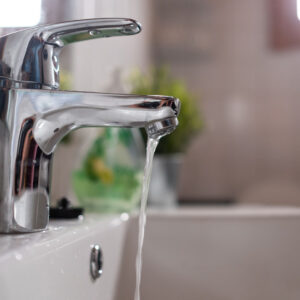
Sure, it can be related to low water levels, but there are a few other areas that may be causing the issue including, but not limited to:
Contact your licensed well contractor for inspection and repair. For a list of licensed well contractors try using our interactive map on our website.
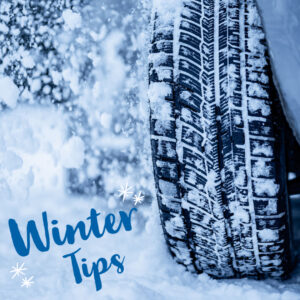 We have gathered the best winter tips over the last several years and put them all in one place. These tips are not only for your home but also while you are traveling. Let’s dig in!
We have gathered the best winter tips over the last several years and put them all in one place. These tips are not only for your home but also while you are traveling. Let’s dig in!
There’s ‘snow’ place like home:
If you are ever in doubt about your well or household plumbing contact your well contractor or plumber for assistance.
The weather outside is frightful – travel tips:
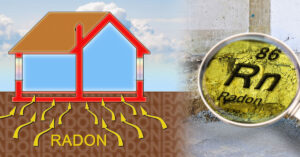 January is National Radon Action Month! Radon is a naturally occurring radioactive gas that has no color, odor, or taste. It comes from the breakdown of radioactive elements like uranium and radium in the ground. The soil under your home releases radon which can make its way through cracks or openings in your home and sometimes through well water. High levels of radon are commonly found in certain kinds of bedrock such as granite and dark shale. Radon can be inhaled when it is released from water while showering, washing dishes, or cooking. It can also be ingested directly through drinking water. Research shows that inhaled radon is the greatest concern as it increases the risk of lung cancer. Drinking water contaminated by radon may raise the risk of stomach cancer.
January is National Radon Action Month! Radon is a naturally occurring radioactive gas that has no color, odor, or taste. It comes from the breakdown of radioactive elements like uranium and radium in the ground. The soil under your home releases radon which can make its way through cracks or openings in your home and sometimes through well water. High levels of radon are commonly found in certain kinds of bedrock such as granite and dark shale. Radon can be inhaled when it is released from water while showering, washing dishes, or cooking. It can also be ingested directly through drinking water. Research shows that inhaled radon is the greatest concern as it increases the risk of lung cancer. Drinking water contaminated by radon may raise the risk of stomach cancer.
Here’s the good news…radon exposure is completely preventable! Learn more about radon. Find a certified lab in your area for both air and water radon testing.
Here’s a fun homemade after school sweet treat for the kiddos. Wink, wink, parents like it too! Who knew water and salt could make such a yummy recipe?
2 tbsp. granulated sugar
1/2 tsp. pure vanilla extract
3 c. ice
1/3 c. kosher salt
Toppings of your choice
DIRECTIONS
In a small resealable plastic bag, combine half-and-half, sugar, and vanilla. Push out excess air and seal.
Into a large resealable plastic bag, combine ice and salt. Place the small bag inside the bigger bag and shake vigorously, for 7 to 10 minutes, until the ice cream has hardened.
Remove from the bag and enjoy with your favorite ice cream toppings.
For complete details and a video go to Delish.com.